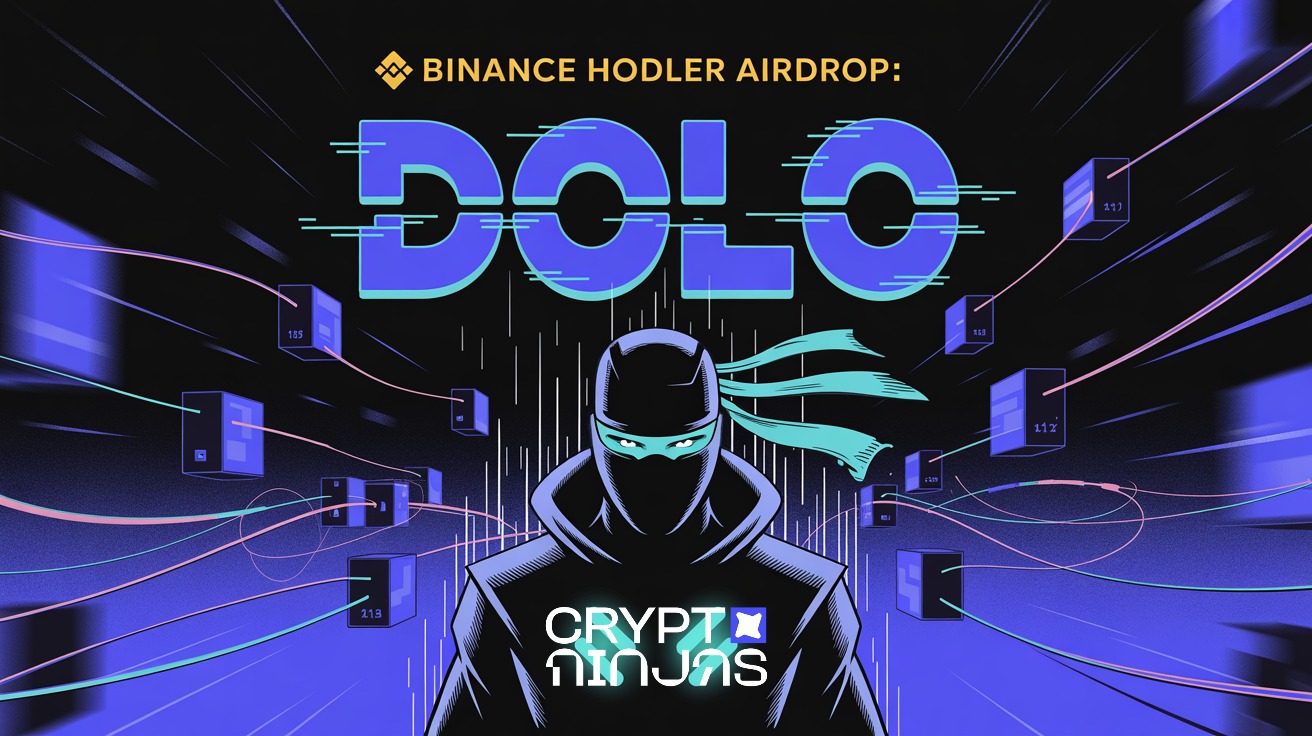Gumi, A Tokyo-listed game maker, wants ¥2.5 billion worth of XRP, and
it is not just chasing a pump. It is buying into a remittance-first future that
Japan’s rules increasingly allow.
Gumi, the Tokyo-listed mobile gaming and blockchain firm, just put a
number on its conviction. The company plans
to acquire up to 2.5 billion yen of XRP, roughly 17 million dollars, for
its corporate treasury. This is not meme-coin roulette. It is a statement that an
altcoin with real payment rails is more useful to a Japanese balance sheet (and
to CFOs trying to convince a board) than one more speculative bet.
🚀 Gumi’s Big Bet on XRP! 💰
Tokyo-listed game maker Gumi, backed by SBI, is making waves! They’re buying $17 MILLION worth of XRP! 😲
Why? 🤔
* To expand its web3 and blockchain focus. 🌐
* Part of a long-term strategy to join the XRP ecosystem, vital for international… pic.twitter.com/uXrA2UyQak— Meow Meow News (@MeowMeowMews) September 1, 2025
The Timing is Not an Accident
Japan’s corporate treasury experiment started with Bitcoin buys that
grabbed headlines. Now the sequel is here, and it looks more like a portfolio
than a stunt. The buy is part of a broader altcoin buying spree, with Gumi
poised as the latest mover. That reads as cause, not coincidence. As local
compliance hardens and accounting treatment gets clearer, Japanese firms can
finally hold digital assets without feeling like they are smuggling contraband
through finance. Here’s an overview from
earlier in the year.
XRP
is pitched to institutions as a utility asset aligned with cross-border
payments, not only a trading chip. In short, being able to dramatically
reduce transfer costs is something a CFO can defend in a meeting. The firm
highlights Japan’s increasingly supportive stance toward real-world usage of
blockchain for remittances and liquidity.
Follow the Rails, Not the Noise
If you want to understand why XRP, follow the transaction plumbing. Key
to all this is the payments angle, pointing to cost and finality
characteristics that make XRP attractive for moving value across borders. None
of this is flashy. It is also exactly why corporate treasuries care. You can
hold it, you can use it, and it maps to business lines like remittance or
treasury operations, not just trading desks.
🚨🚨🚨👀 XRP
Japanese gaming giant Gumi’s XRP purchase is twice the size of its previous Bitcoin investment.
Japanese gaming giant Gumi’s XRP purchase is twice the size of its previous Bitcoin investment
Table of Contents
Gumi’s XRP bet is more than twice the size of its… pic.twitter.com/SGt69njTUJ— XRP IS INEVITABLE (@__doitnow) August 31, 2025
Gumi appears to be buying with that in mind. While the company is best
known for games, the strategic language around this purchase is about joining a
financial network and tapping liquidity for services that look more like
fintech than fandom. The plan is not forever-priced promises. It is the boring,
revenue-adjacent stuff that keeps CFOs employed.
Japan Inc is Quietly Standardizing Crypto
The country’s rulebook has moved from maybe to mostly. That matters. This
is lowering operational risk for listed firms that want crypto exposure for
reasons other than vibes. Japan’s environment is increasingly one where utility
tokens tied to real payment activity have a clearer glide path into corporate
treasuries. If you think that sounds tailor-made for XRP, you are not wrong.
Another not-so-subtle nudge is shareholder pressure and ecosystem
gravity. Gumi’s largest shareholder is SBI Holdings, long
aligned with Ripple. That relationship does not decide strategy on its own,
but it does make XRP the shortest route to real integrations and
counterparties.
The Calendar Tells a Story
Corporate purchases are not YOLO market orders. They are windows,
approvals, and paperwork. Reporting around the move indicates Gumi’s XRP
acquisition window spans from early
September 2025 into February 2026. That cadence is corporate, not crypto-Twitter.
It is also a hint that the firm wants price risk averaged, operational hooks
tested, and treasury processes drilled before it scales. Use this lens and the
buy looks less like a bet and more like onboarding.
The New Japanese Playbook?
First, Bitcoin is still the billboard, but it is no longer the only star
attraction. Second, utility has finally become a competitive advantage in
corporate crypto. If you can plug an asset into payments, liquidity, or
treasury settlement, it has a seat at the table. Third, Japan’s regulatory
stance is turning into a moat. When compliance is predictable, publicly traded
companies act like adults. They plan. They diversify. They buy assets that fit
a business model, not just a narrative.
“Major move: Japanese gaming giant Gumi is committing ¥2.5 billion (~$17 million) in XRP between Sep 2025 and Feb 2026. This isn’t just investment—it’s a strategic push into cross-border payments, liquidity, and the Ripple ecosystem. BTC for yield, XRP for utility. Stay tuned. pic.twitter.com/NbiOR2SPUu
— LEXY BERRY# (@akandeolamilek7) August 30, 2025
Gumi’s move is therefore simple. It is paying for access to rails that
exist today. If XRP helps the company extend into remittances or other
financial services, the purchase can return value even if price action is
messy. That is a very corporate way to think about crypto, and it is exactly
why Japan is suddenly interesting again.
A PR Stunt?
Time for the alternative take, though it doesn’t seem to hold weight.
Is this just marketing? Maybe a little. It is also the kind of marketing that
comes with board approvals and execution windows. If the goal were only
headlines, Gumi could have joined the usual Bitcoin choir. Instead, it chose
the network that banks and remittance players actually use. In a market still
addicted to fortune-telling, that looks surprisingly practical.
For more stories of crypto, visit our dedicated pages.
Gumi, A Tokyo-listed game maker, wants ¥2.5 billion worth of XRP, and
it is not just chasing a pump. It is buying into a remittance-first future that
Japan’s rules increasingly allow.
Gumi, the Tokyo-listed mobile gaming and blockchain firm, just put a
number on its conviction. The company plans
to acquire up to 2.5 billion yen of XRP, roughly 17 million dollars, for
its corporate treasury. This is not meme-coin roulette. It is a statement that an
altcoin with real payment rails is more useful to a Japanese balance sheet (and
to CFOs trying to convince a board) than one more speculative bet.
🚀 Gumi’s Big Bet on XRP! 💰
Tokyo-listed game maker Gumi, backed by SBI, is making waves! They’re buying $17 MILLION worth of XRP! 😲
Why? 🤔
* To expand its web3 and blockchain focus. 🌐
* Part of a long-term strategy to join the XRP ecosystem, vital for international… pic.twitter.com/uXrA2UyQak— Meow Meow News (@MeowMeowMews) September 1, 2025
The Timing is Not an Accident
Japan’s corporate treasury experiment started with Bitcoin buys that
grabbed headlines. Now the sequel is here, and it looks more like a portfolio
than a stunt. The buy is part of a broader altcoin buying spree, with Gumi
poised as the latest mover. That reads as cause, not coincidence. As local
compliance hardens and accounting treatment gets clearer, Japanese firms can
finally hold digital assets without feeling like they are smuggling contraband
through finance. Here’s an overview from
earlier in the year.
XRP
is pitched to institutions as a utility asset aligned with cross-border
payments, not only a trading chip. In short, being able to dramatically
reduce transfer costs is something a CFO can defend in a meeting. The firm
highlights Japan’s increasingly supportive stance toward real-world usage of
blockchain for remittances and liquidity.
Follow the Rails, Not the Noise
If you want to understand why XRP, follow the transaction plumbing. Key
to all this is the payments angle, pointing to cost and finality
characteristics that make XRP attractive for moving value across borders. None
of this is flashy. It is also exactly why corporate treasuries care. You can
hold it, you can use it, and it maps to business lines like remittance or
treasury operations, not just trading desks.
🚨🚨🚨👀 XRP
Japanese gaming giant Gumi’s XRP purchase is twice the size of its previous Bitcoin investment.
Japanese gaming giant Gumi’s XRP purchase is twice the size of its previous Bitcoin investment
Table of Contents
Gumi’s XRP bet is more than twice the size of its… pic.twitter.com/SGt69njTUJ— XRP IS INEVITABLE (@__doitnow) August 31, 2025
Gumi appears to be buying with that in mind. While the company is best
known for games, the strategic language around this purchase is about joining a
financial network and tapping liquidity for services that look more like
fintech than fandom. The plan is not forever-priced promises. It is the boring,
revenue-adjacent stuff that keeps CFOs employed.
Japan Inc is Quietly Standardizing Crypto
The country’s rulebook has moved from maybe to mostly. That matters. This
is lowering operational risk for listed firms that want crypto exposure for
reasons other than vibes. Japan’s environment is increasingly one where utility
tokens tied to real payment activity have a clearer glide path into corporate
treasuries. If you think that sounds tailor-made for XRP, you are not wrong.
Another not-so-subtle nudge is shareholder pressure and ecosystem
gravity. Gumi’s largest shareholder is SBI Holdings, long
aligned with Ripple. That relationship does not decide strategy on its own,
but it does make XRP the shortest route to real integrations and
counterparties.
The Calendar Tells a Story
Corporate purchases are not YOLO market orders. They are windows,
approvals, and paperwork. Reporting around the move indicates Gumi’s XRP
acquisition window spans from early
September 2025 into February 2026. That cadence is corporate, not crypto-Twitter.
It is also a hint that the firm wants price risk averaged, operational hooks
tested, and treasury processes drilled before it scales. Use this lens and the
buy looks less like a bet and more like onboarding.
The New Japanese Playbook?
First, Bitcoin is still the billboard, but it is no longer the only star
attraction. Second, utility has finally become a competitive advantage in
corporate crypto. If you can plug an asset into payments, liquidity, or
treasury settlement, it has a seat at the table. Third, Japan’s regulatory
stance is turning into a moat. When compliance is predictable, publicly traded
companies act like adults. They plan. They diversify. They buy assets that fit
a business model, not just a narrative.
“Major move: Japanese gaming giant Gumi is committing ¥2.5 billion (~$17 million) in XRP between Sep 2025 and Feb 2026. This isn’t just investment—it’s a strategic push into cross-border payments, liquidity, and the Ripple ecosystem. BTC for yield, XRP for utility. Stay tuned. pic.twitter.com/NbiOR2SPUu
— LEXY BERRY# (@akandeolamilek7) August 30, 2025
Gumi’s move is therefore simple. It is paying for access to rails that
exist today. If XRP helps the company extend into remittances or other
financial services, the purchase can return value even if price action is
messy. That is a very corporate way to think about crypto, and it is exactly
why Japan is suddenly interesting again.
A PR Stunt?
Time for the alternative take, though it doesn’t seem to hold weight.
Is this just marketing? Maybe a little. It is also the kind of marketing that
comes with board approvals and execution windows. If the goal were only
headlines, Gumi could have joined the usual Bitcoin choir. Instead, it chose
the network that banks and remittance players actually use. In a market still
addicted to fortune-telling, that looks surprisingly practical.
For more stories of crypto, visit our dedicated pages.







